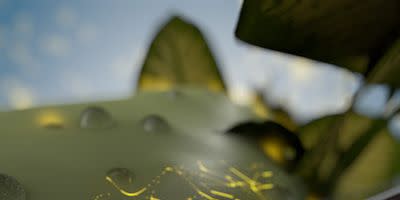An Advance in Bioengineering Could Pave the Way for Tomorrow’s Superplants

Physicist Markita Landry set up a lab at the University of California, Berkeley to take images of what goes on between cells. She thought that arranging carbon nanotubes around the cells would help her see what was happening inside, but the nanotubes kept puncturing the cell walls.
“This was a project that failed pretty hard and pretty quick,” Landry told NPR. But like many scientific flubs, the failure revealed a solution to a completely different problem.
For decades, scientists have been trying out various ways to modify the genetics of plants. It’s more difficult to do in plants than in animals because, in addition to a cell membrane, plants have cell walls made of rigid cellulose fiber that, when bonded with other cell walls, creates the structure of the plant. Inserting a single strand of DNA into a plant would be like trying to push a cooked noodle through a thick slice of bread. But electrostatically adhering a strand of DNA to one of Landry’s nanotubes stiffened the tool just enough to make it a perfect “DNA delivery platform.”
Current methods for plant bioengineering involve “firing genes into the tissue-a process known as biolistics” and a Trojan Horse approach whereby scientists hide DNA inside bacteria that infiltrates the plant. The gene blasting approach does too much damage to be effective, and plants are impressively resistant to bacterial infection. The nanotube method is far more elegant and even managed to insert genes into chloroplasts, the organelles in plant cells responsible for photosynthesis.
The paper describing the findings places Landry’s discovery in the global context of the always growing demand for food and energy: “In agriculture, genetic enhancement of plants can be employed to create crops that are resistant to herbicides, insects, diseases, and drought.” To do that quickly and efficiently across species, you need an extremely precise gene-editing tool.
As it turns out, we’ve got one. It’s called the CRISPR/Cas9, and it made waves last year when Chinese scientist Jiankui He gene-edited babies to give them immunity against HIV/AIDS. In plants, the sturdy, DNA-wrapped nano-lances can do something similar by introducing the gene-splicing enzyme, Cas9, and the DNA encoder, RNA, to make the desired genetic modification permanent.
Because the technique prevents the foreign DNA from being inserted into the plant genome itself, such crops would not be considered “genetically modified”, or GMO, in the U.S. and other countries outside the European Union. And according to Landry, the nanotubes “are robust little things” making them “amenable for garage science. You don’t need a fridge, a gene gun, bacteria…. We can generate them at scale,” unlike the cumbersome, low-yield methods otherwise in use.
After successful experiments with arugula and wheat cells, Berkeley researchers are now testing nanotube diffusion in tobacco, cotton, and other varieties of wheat. Landry, meanwhile, wants to better understand the genetics at work within each cell-namely, how the inserted genes are transformed into proteins as if they were the cell’s own and not the result of a bioengineered nano-probe that started out as an accident.
('You Might Also Like',)
